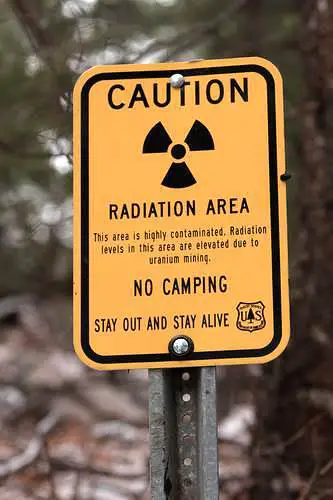 In the field of physics, radiation is a form of energy that travels through space to penetrate and affect other materials. There are three types of radiation – alpha, beta and gamma – and each have their own set of properties. Not all types of radiation are deadly, but they can damage cells in high doses. It’s very important, then, that workers in nuclear and industrial industries are properly protected.
In the field of physics, radiation is a form of energy that travels through space to penetrate and affect other materials. There are three types of radiation – alpha, beta and gamma – and each have their own set of properties. Not all types of radiation are deadly, but they can damage cells in high doses. It’s very important, then, that workers in nuclear and industrial industries are properly protected.
But how do you monitor something that can’t be seen, smelt or heard? When something is beyond the comprehension of the human senses, we must turn to specialist monitoring devices to do the job for us.
[Suggested reading: Studies Proved Laptop Radiation and Other Forms of Low Level Radiation Pose Risk to Users]
In a news story by the BBC, it was reported that radiation levels around Japan’s Fukushima nuclear power plant in the aftermath of the 2011 earthquake was 18-times higher than previously thought when a more sensitive device was used. This clearly demonstrates how different devices have varied levels of effectiveness in the field.
Here are three of the most commonly used detectors and a brief explanation of how they work.
1. Gas-filled detectors
Perhaps the most famous form of radiation detection is the Geiger counter. Lending its name from inventor Hans Geiger, the original principle behind the device was discovered in 1908, then developed into the popular instrument in 1928. Nowadays, you can get a portable geiger counter which is pocket-sized and can detect gamma radiation as low as 0.1 megaelectron volts for pinpoint accurate readings.
A geiger counter is made up of two main components: a small metal tube and the display electronics. The metal tube is filled with a gas (usually argon, helium or neon) and has a thin strip of electrical wire running through the center. This wire is connected to a current between 400 and 600 volts.
When the radioactive particles pass through the device, they cause the gas molecules in the tube to collide with the wire and complete the circuit. The electrical pulse created is then amplified so that it can be displayed on a readout.
2. Scintillation detectors
Scintillation detectors are incredibly important devices for workers in nuclear power stations. They allow operators to monitor the current levels of alpha, beta and gamma radiation in the area to ensure it doesn’t reach hazardous levels. Radiation monitors are usually supplied to the power stations by companies like Tracerco. The monitors are handheld devices that let workers interpret the levels of radiation in potentially hazardous areas.
These detectors are filled with a material that glows when it comes into contact with radioactive material. When radioactive photons enter the device, they react with the salt material that’s inside to produce a tiny flash of light. This flash is amplified until it’s millions of times larger so that it can be detected and displayed by the instrument.
3. Cloud chambers
A diffusion cloud chamber detects the trail left behind by a radioactive particle. This is similar to the trails left behind by a high-altitude plane as it travels through the sky. A chamber is filled with a supersaturated vapor that will turn into droplets when it’s subjected to the passage of radioactive particles. By observing the trail the particle left behind, analysts can determine the direction and energy of the radiation. This YouTube video visually demonstrates how you can build your own cloud chamber and how this technology works.
[Image credit: Jason Corneveaux, Flickr]




good post Peter. radiation is a matter of concern in all countries with the new technologies coming up every other day. these detectors are really useful. thanks for the info.